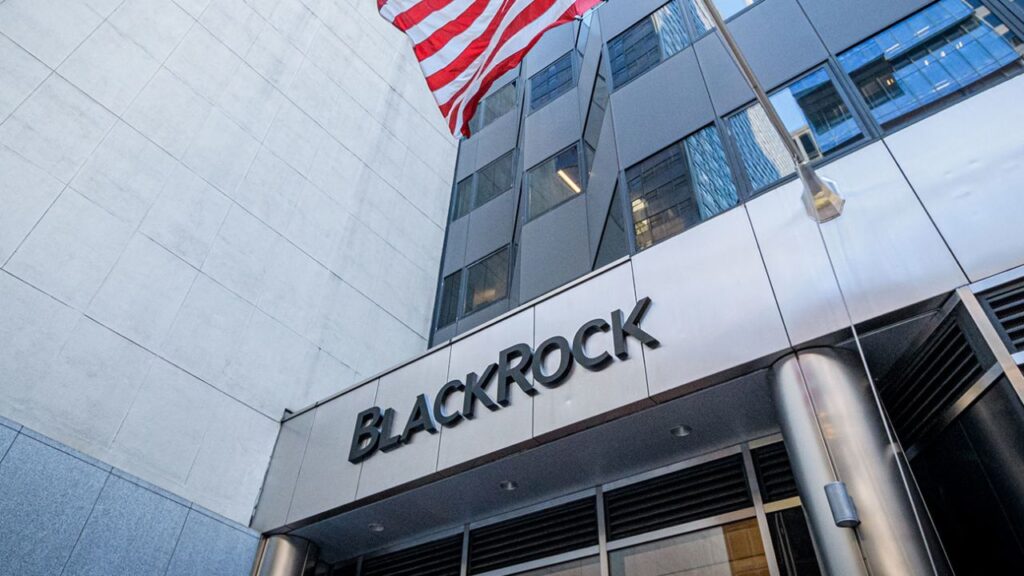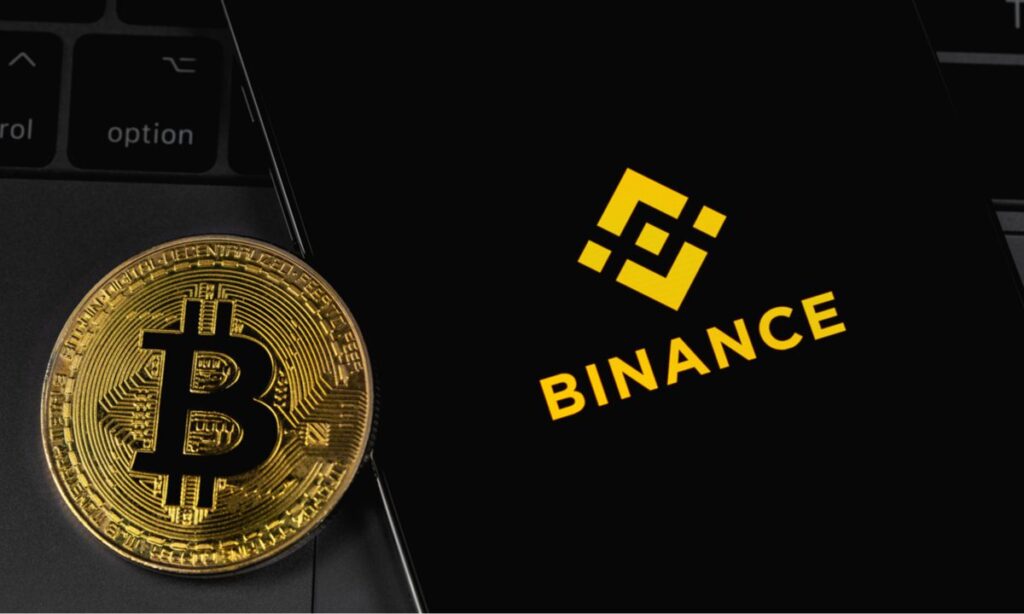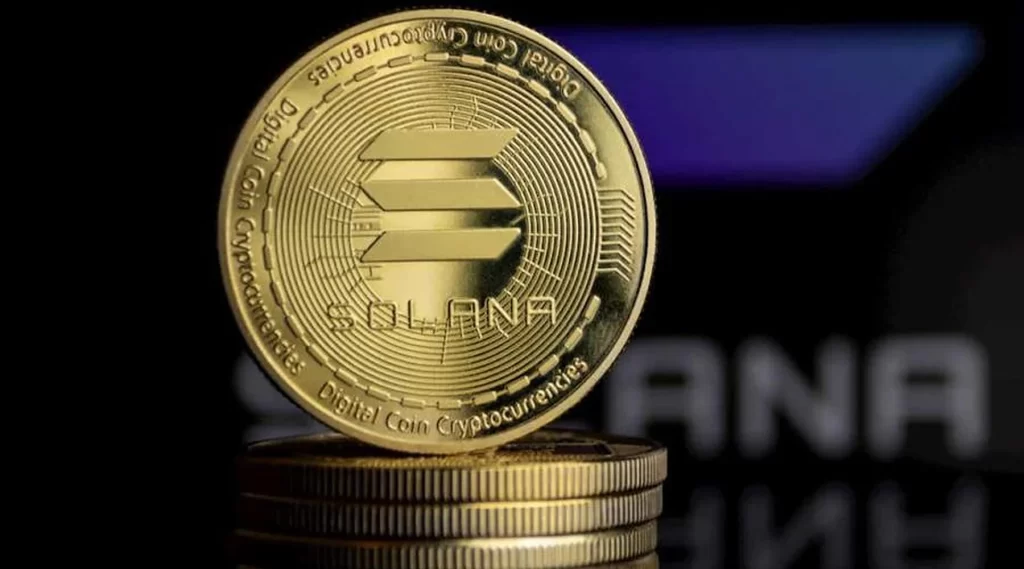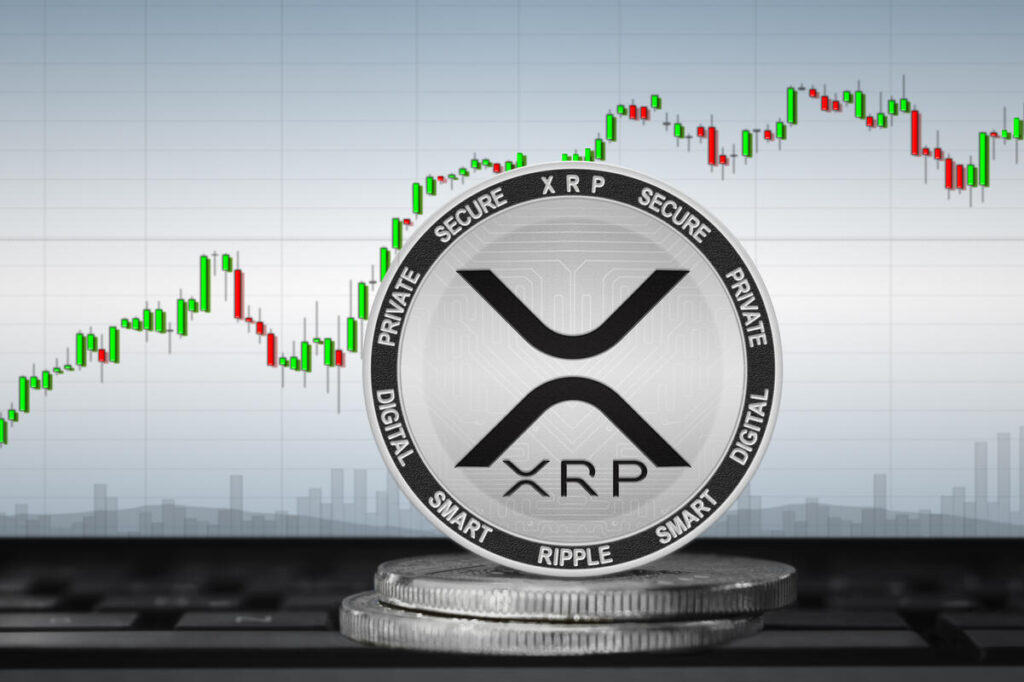BlackRock has achieved a new milestone with over $10.6 trillion in assets under management (AUM), marking a $1.2 trillion increase from the previous year.
The world’s largest asset manager attributed this growth to significant inflows into exchange-traded funds (ETFs).
According to Larry Fink, CEO of BlackRock, the firm’s ETFs saw record inflows at the start of 2024.
In the asset manager’s quarterly earnings report, Fink stated:
“Organic growth was driven by private markets, retail active fixed income, and surging flows into our ETFs, which had their best start to a year on record.”
BlackRock is the issuer of the iShares Bitcoin Trust (IBIT), the world’s largest spot Bitcoin ETF, which holds over $19.4 billion worth of Bitcoin and commands a 35.2% market share among all US Bitcoin ETFs, as reported by Dune.
The trading behaviors of asset management giants and ETF issuers like BlackRock can significantly influence Bitcoin’s price due to their substantial purchasing power.
In the second quarter of 2024, investors purchased $83 billion worth of BlackRock ETF shares, bringing the total for the year to over $150 billion.
The asset manager reported an 8% increase in revenue and an 11% increase in operating income year-over-year.
Fink credits part of BlackRock’s success to its “longstanding relationships with corporates and governments.”
READ MORE: Germany Completes Bitcoin Sell-Off Amid Market Turbulence and Mt. Gox Reimbursement Concerns
Fink further explained:
“These relationships differentiate BlackRock as a capital partner in private markets, driving unique deal flow for clients.
“We have strong sourcing capabilities, and we are transforming our private markets platform to bring even more benefits of scale and technology to our clients.”
Additionally, spot Bitcoin ETF inflows have turned positive after three weeks of outflows, aiding Bitcoin’s price recovery above $60,000.
US spot Bitcoin ETFs recorded their second consecutive week of net positive inflows, totaling over $414 million, according to Dune data.
On July 12, BlackRock saw the largest inflows among all ETF issuers, attracting over $120 million in investments, as per Farside Investors data.
Last week, Bitcoin experienced its fifth-largest weekly inflow on record, amounting to over $1.35 billion, while short Bitcoin-related investment products saw their largest weekly outflows since April 2024, totaling over $8.6 million.
To submit a crypto press release (PR), send an email to sales@cryptointelligence.co.uk.
New York, United States, July 15, 2024 – Stooges ($STOG), a memecoin running on the Solana blockchain, has taken a bold step in the cryptocurrency world by burning $1 million in liquidity. This move underscores Stooges’ dedication to fortifying its market standing and providing value to its investors. The liquidity burn is aimed at decreasing the circulating supply of $STOG tokens, thereby increasing scarcity and potentially boosting their value.
In addition to this, Stooges has announced its upcoming listing on the Bingx exchange, which is the official sponsor of Chelsea, scheduled for this Friday. This strategic decision, aims to further elevate the value of $STOG in the market. By following the footsteps of other successful cryptocurrencies that have employed similar liquidity burn strategies, Stooges seeks to solidify its position as a leader in this market.
Furthermore, Stooges has recently witnessed a notable 200% increase in its market value and has rolled out MasterCard and UnionPay debit cards. These cards empower $STOG holders to engage in everyday transactions and withdraw cash from ATMs, marking Stooges as the pioneering meme cryptocurrency on Solana to provide such functionality. With a secure mobile app managed by Fireblocks and compatibility with Google Pay and Apple Pay, these cards improve accessibility and convenience for users. Pre-sale for the cards is now available at https://stooges.io/card, with deliveries scheduled to begin in July.
Not only that, Stooges was successfully listed on the MEXC exchange on June 14, 2024, following a prosperous presale conducted on Pinksale starting May 10, 2024. This accomplishment has generated enthusiasm within the cryptocurrency community, opening up new avenues for trading and investment in $STOG.
Stooges extends a warm invitation to cryptocurrency enthusiasts and meme aficionados alike to join its community. Stay updated with Stooges on social media for the latest developments and opportunities to engage.
About Stooges ($STOG) Memecoin:
Stooges is a playful, community-driven memecoin launched on the Solana blockchain. It takes a lighthearted approach to the cryptocurrency market, emphasizing fun and satire over serious investment.
The liquidity burn is part of Stooges’ broader strategy to create a strong and engaged community while pushing the boundaries of what a memecoin can achieve. By reducing the token supply, Stooges aims to enhance value for its holders and maintain the coin’s momentum.
The price of Ether has surged past $3,300, driven by the anticipation that spot ETH exchange-traded funds (ETFs) might launch by the end of this week.
Ether is currently trading at $3,331, marking a 16% increase from $2,909 over the past week, according to TradingView data.
Nate Geraci, ETF analyst and president of The ETF Store, predicted on X that eight spot ETH ETFs would be launched by the week’s end.
He posted on July 14, “Welcome to spot ETH ETF approval week.
“Don’t know anything specific, just can’t come up [with] good reason for any further delay at this point.”
Echoing Geraci’s sentiment, an anonymous source familiar with the situation informed Cointelegraph on July 12 that the spot ETH funds were expected to launch by the week’s conclusion.
Several issuers, including VanEck and 21Shares, filed amended registrations last week, aiming to secure the SEC’s final approval to list spot Ether ETFs.
Analysts believe the launch of these ETFs will be a significant catalyst for ETH prices in the coming months.
READ MORE: CoinStats Exploiter Moves Nearly $1 Million in Ether to Tornado Cash Following Major Breach
Tom Dunleavy, a managing partner at crypto investment firm MV Global, told Cointelegraph he expects the funds to attract up to $10 billion in new inflows in the months following their launch.
This influx could drive Ether prices to new all-time highs by the end of the year.
Contrary to the popular opinion among other ETF analysts, Dunleavy argued that Ether ETFs would be easier to sell to Wall Street compared to Bitcoin ETFs.
“We believe that there will be strong buy pressure with a much more clear narrative that traditional investors can understand. ETH has cash flows.
It can be described as a tech stock, the app store of crypto, or an internet bond,” Dunleavy noted in a Q2 investor update to Cointelegraph.
“This is a much easier sell for financial advisors than ‘digital gold.’” He added that ETH’s price action, which has lagged behind Bitcoin for the last 18 months, would rebound quickly following the launch of the funds.
To submit a crypto press release (PR), send an email to sales@cryptointelligence.co.uk.
Wallets associated with the CoinStats exploiter have recently transferred nearly $1 million in Ether to the cryptocurrency mixing service Tornado Cash.
Blockchain security firm CertiK identified that two wallets linked to the June CoinStats exploit moved 311 ETH, valued at approximately $959,000, to Tornado Cash.
Specifically, one wallet transferred 211 ETH, and the other sent 100 ETH to the crypto mixer.
Crypto mixers help maintain transaction privacy by blending identifiable funds with a pool of other funds, effectively anonymizing transfers.
Hackers frequently use these services to launder their stolen assets.
On June 22, CoinStats, a crypto portfolio manager, halted user activity due to a breach that compromised 1,590 crypto wallets.
The company promptly shut down its application to “isolate the security incident.”
CoinStats assured that the attack had been contained and emphasized that “none of the connected wallets and CEXes were impacted.” The firm advised affected users to move their funds using exported private keys.
By June 30, CoinStats announced efforts to optimize their transaction database and migrate to a new platform to enhance efficiency and reliability.
Additionally, they planned to upgrade their systems with further audits and improvements.
On July 3, CoinStats confirmed that its platform’s functionalities had been restored and were fully operational.
In a June 26 statement, CoinStats CEO Narek Gevorgyan provided insights into the investigation.
READ MORE: Centralized Exchanges Hit Hard as Crypto Theft Nears $1.4 Billion in 2024, Cyvers Report Reveals
Gevorgyan disclosed that their AWS infrastructure was compromised, suggesting that an employee was deceived into downloading malicious software. Gevorgyan explained:
“Our AWS infrastructure was hacked, with strong evidence suggesting it was done through one of our employees who was socially engineered into downloading malicious software onto his work computer.”
The CEO expressed empathy for those who lost funds and assured that CoinStats would support the victims, having already discussed their options.
Community reports indicated substantial losses, including one wallet reportedly losing nearly $9 million in Maker (MKR).
In a July 5 update, CoinStats reiterated their ongoing investigation into the incident and outlined actions to secure their new infrastructure.
The company promised to share additional information soon, including measures to support the victims.
To submit a crypto press release (PR), send an email to sales@cryptointelligence.co.uk.
US-based spot Bitcoin exchange-traded funds (ETFs) experienced a robust influx on July 12, amassing over $310 million in inflows, marking their strongest performance since June 5.
According to Farside Investors data, BlackRock’s iShares Bitcoin Trust led the pack with $120 million in inflows, closely followed by the Fidelity Wise Origin Bitcoin Fund with $115.1 million.
The Bitwise Bitcoin ETF secured the third spot with $28.4 million, while the Grayscale Bitcoin Trust saw a rare inflow day of $23 million.
The VanEck Bitcoin Trust ETF and Invesco Galaxy Bitcoin ETF also attracted $6 million and $4 million in inflows, respectively.
Conversely, ETFs issued by Hashdex, Franklin Templeton, Valkyrie, and WisdomTree failed to register any inflows on the day.
This surge represents the largest single-day inflow since June 5, when these ETFs garnered a total of $488.1 million.
From Monday, July 8, to Friday, these funds collectively accumulated $1.04 billion in new investments.
Since their launch just over six months ago, spot Bitcoin ETFs have accumulated $15.8 billion in net inflows.
This total includes outflows of over $18.6 billion from Grayscale’s flagship Bitcoin product, which transitioned to a spot form following SEC approval in January.
The Hashdex Bitcoin ETF is the only other spot Bitcoin ETF besides Grayscale’s to experience net outflows, albeit a modest $2 million.
CoinGecko data shows Bitcoin has increased by 1.1% over the last 24 hours, currently trading at $57,858.
However, the cryptocurrency has experienced a 15% decline in the last month and is down 21% from its all-time high.
Looking ahead, some spot Bitcoin ETF issuers are preparing to introduce spot Ether ETFs, potentially launching as early as July 15.
Nate Geraci, president of The ETF Store, indicated these issuers are awaiting SEC approval of their amended S-1 registration statements following initial feedback in late June.
To submit a crypto press release (PR), send an email to sales@cryptointelligence.co.uk.
A Nigerian court has set October 11 as the date for delivering the verdict in the tax evasion trial against cryptocurrency exchange Binance.
The exchange is facing four counts of tax evasion, including failure to register with Nigeria’s Federal Inland Revenue Service (FIRS).
Binance lawyer Ayodele Omotilewa appeared in court on July 12 and entered a not-guilty plea to all charges before Judge Emeka Nwite.
Omotilewa argued for the dismissal of the charges, citing lack of substance, similar to the dismissal of charges against Binance executives Tigran Gambaryan and Nadeem Anjarwalla in June.
The executives were cleared of tax evasion charges by the Federal High Court in Abuja, though they still face separate money laundering allegations.
The court’s decision to adjourn the case until October allows for further deliberation and evidence review by both the defense and prosecution.
Background details reveal that Anjarwalla and Gambaryan were detained in February during a visit to Nigeria amid allegations of tax evasion and money laundering.
READ MORE: German Government Resumes Bitcoin Sales, Sparking Market Volatility Concerns
Binance appointed Omotilewa after the FIRS amended charges, dropping tax evasion allegations against its executives.
Regarding recent developments, Binance has refrained from commenting, previously asserting that charges should be dismissed.
Nigeria attributes currency issues partly to Binance, claiming cryptocurrency platforms exacerbate the Nigerian naira’s trading preferences amid dollar shortages and currency devaluation.
The crackdown on cryptocurrency activities aligns with the National Security Adviser’s view that cryptocurrency trading poses national security risks.
In response, the Central Bank of Nigeria (CBN) directed fintech companies to identify and report accounts involved in cryptocurrency transactions, impacting Binance’s operations.
In a July 6 court appearance, the CBN’s payment policy and regulation chief advocated restricting deposit and withdrawal transactions for Binance to banks and authorized financial institutions.
These legal developments underscore ongoing regulatory challenges facing Binance and other cryptocurrency platforms in Nigeria, amidst broader geopolitical and economic implications.
To submit a crypto press release (PR), send an email to sales@cryptointelligence.co.uk.
Germany completed its exit from Bitcoin holdings on July 12, as reported by Arkham Intelligence.
The transaction involved transferring 3,846 Bitcoin to “Flow Traders and 139Po,” entities characterized by Arkham as likely institutional deposit or over-the-counter services.
This marked the conclusion of a series of transactions where the German government had steadily sold off tens of thousands of Bitcoin over recent weeks, primarily sourced from an asset seizure.
The substantial sell-off exerted pressure on the Bitcoin market, contributing to prices remaining below $60,000 and its 200-day exponential moving average.
Despite Germany depleting its Bitcoin reserves, another impending factor affecting market sentiment is the $9 billion Mt. Gox reimbursement plan.
This plan stems from the 2014 collapse of the exchange, coinciding with Bitcoin’s early days of trading at a few hundred dollars.
Tony Sycamore, an analyst from IG Markets, offered insights suggesting that the Mt. Gox repayments might not devastate the markets as feared.
Sycamore emphasized the complexity of market dynamics and anticipated that approximately half of the reimbursement funds could hit exchanges in July.
Nevertheless, he asserted that the market had already priced in this development, indicating that investors were aware of the upcoming reimbursements for a considerable time.
Amidst these developments, institutional investors capitalized on the market dip.
CoinShares data highlighted that U.S. exchange-traded funds (ETFs) received $295 million in inflows during the week of July 8, reversing a trend of subdued inflows into these investment vehicles.
Overall, Germany’s final Bitcoin transaction signifies the culmination of its recent divestment strategy, contributing to ongoing market uncertainties influenced by both institutional actions and anticipated reimbursements.
As the market navigates these complexities, analysts like Sycamore believe that despite potential short-term impacts, broader market sentiments and investor behaviors are already incorporating these foreseeable developments.
To submit a crypto press release (PR), send an email to sales@cryptointelligence.co.uk.
SOL, the native token of the Solana network, has struggled to surpass the $145 mark since July 3.
This subdued performance reflects waning investor interest in cryptocurrencies, which led to a 5% drop in the sector’s total market capitalization over nine days.
During this period, SOL lagged behind competitors, experiencing a 7.8% decline, whereas BNB and Ether saw smaller decreases of 6.5%.
Concerns linger among traders about SOL’s bearish trend persisting despite potential recoveries in the broader crypto market.
Yet, promising signs from Solana’s onchain metrics and SOL derivatives suggest a possible turnaround, hinting at a bullish breakout above $160, a level not seen in over five weeks.
The underperformance of certain Solana SPL tokens has also contributed to decreased demand for SOL.
Significant losses were observed among ecosystem tokens, including a 24% drop in Dogwifhat (WIF), an 18% decline in Helium (HNT), and an 18% correction in Jito (JTO) between July 3 and July 12.
Despite recent challenges, SOL maintains its position as the fourth largest cryptocurrency by market capitalization, excluding stablecoins, with a valuation of $65 billion.
In comparison, Toncoin (TON) holds $18.4 billion, Tron at $12 billion, and Avalanche at $10.1 billion.
A noteworthy development occurred on July 5 when Solana’s total value locked (TVL) matched that of the BNB Chain for the first time.
READ MORE: Global Crypto Trading to Exceed $108 Trillion by 2024, Driven by US and Europe
This parity has continued since, marking a significant shift in capital deployment towards the Solana network, according to DefiLlama data.
Solana’s leading protocols include liquid staking Jito with $1.6 billion in deposits, followed closely by Marinade and Kamino, both nearing $1.1 billion in TVL.
Solana’s network activity has shown resilience amidst broader market declines.
While Ethereum, BNB Chain, and Polygon experienced reductions in active users and transaction volumes, Solana saw a 19% increase in users and a 12% rise in DApps volumes over the past seven days.
Raydium, Solana’s decentralized exchange, recorded a notable 39% surge in active addresses, contrasting with Move Stake on BNB Chain, which saw 198,570 active addresses over the same period.
Examining SOL’s futures markets reveals a nuanced picture, with perpetual contracts showing a near-zero funding rate recently, indicating balanced demand between buyers and sellers.
This stability suggests that despite current uncertainties, SOL’s market fundamentals remain steady, potentially laying the groundwork for renewed investor confidence and a resurgence towards the $160 threshold.
To submit a crypto press release (PR), send an email to sales@cryptointelligence.co.uk.
Following a landslide victory for the UK Labour Party on July 4, Prime Minister Keir Starmer has begun assembling his new government, appointing Member of Parliament Tulip Siddiq among others.
On July 9, PM Starmer named Siddiq as Economic Secretary to the Treasury and City Minister, entrusting her with overseeing policies impacting digital assets and central bank digital currencies in the UK.
Siddiq, who previously held shadow roles while the Conservatives were in power, indicated a stance favoring stricter cryptocurrency regulations.
In a May 2023 op-ed for the New Statesman, Siddiq advocated for a comprehensive regulatory framework akin to the United States, criticizing the previous government’s approach as akin to the “Wild West” and emphasizing the need for protections against fraudulent activities.
She expressed Labour’s intent to foster fintech innovation while implementing robust industry oversight.
“A Labour government would be serious about attracting fintech companies to the UK and safely harnessing the progressive potential of crypto technology,” Siddiq remarked, adding, “But it’s time to reject the arguments of the libertarian right and properly regulate the sector.”
Siddiq’s expertise in the field has been recognized; in 2022, she was lauded by CryptoUK as one of the top lawmakers discussing crypto and blockchain in the House of Commons.
READ MORE: Bitcoin Nears $58K as Markets React to Higher-Than-Expected U.S. Producer Price Index
Nigel Green of deVere Group predicted Siddiq would position the UK as a global hub for tokenized assets following Labour’s electoral success.
While Siddiq’s appointment signals Labour’s proactive stance on financial technology, the party’s immediate priorities under PM Starmer also include reversing Conservative policies such as the deportation of asylum seekers to Rwanda.
Despite attempts to reach Siddiq for comment, responses were not provided by the time of publication.
Looking ahead, Labour’s focus on housing and healthcare underpins its early agenda, with decisions on Web3 regulatory infrastructure pending further government deliberation.
The reshuffle in UK politics follows Labour’s acquisition of 411 seats in the 650-seat House of Commons, significantly overshadowing the Conservatives’ 121 seats post-election.
Across the Atlantic, the upcoming general election in the United States in November 2024 holds similar implications for digital asset policies, depending on the election outcome for the House of Representatives, Senate, and Presidency.
Tech trade groups have urged President Joe Biden to provide clear regulatory guidelines on crypto, reflecting broader global trends in financial technology governance.
To submit a crypto press release (PR), send an email to sales@cryptointelligence.co.uk.
XRP, after reaching a four-year low, now shows signs of a potential resurgence against Bitcoin.
Driving this positive shift is the emergence of a triple bottom pattern, a classic bullish formation indicating robust support.
This pattern forms when the price hits three distinct lows around the same level, followed by a breakout above the neckline resistance.
As of July 12, the XRP/BTC pair tested key support near 793 satoshis, with analysts eyeing a breakout scenario.
The weekly relative strength index (RSI) hovered at 36, suggesting XRP’s undervaluation relative to Bitcoin and bolstering optimism for recovery.
A decisive close above 793 satoshis could propel XRP/BTC towards its triple bottom target of approximately 1,055 satoshis.
Conversely, failure to breach this level might see a decline towards the local bottom around 664 satoshis, marking a potential 15% drop from current levels by August.
The recent strength in XRP against Bitcoin contrasts with market dynamics, including Germany’s sizable BTC sell-off, amounting to $2.69 billion in outflows from government-associated wallets since mid-June.
Additionally, the ongoing reimbursement of 140,000 BTC to Mt. Gox creditors has tempered interest in Bitcoin, contributing to XRP/BTC’s 20% gain in July.
READ MORE: Global Crypto Trading to Exceed $108 Trillion by 2024, Driven by US and Europe
Bitcoin’s dominance slipped marginally to 54.55% on July 12, suggesting a possible shift of trader interest towards altcoins amid Bitcoin’s consolidation phase.
XRP remains relatively underbought compared to other top cryptocurrencies in 2024, with year-to-date returns at approximately -26.50%.
XRP/BTC’s weekly RSI rebounded from its two-year low around 33, historically preceding a substantial rally, hinting at potential upward movement.
In contrast, Bitcoin’s RSI corrected sharply from an overbought 88 in March to a neutral 45.50 as of July 12, indicating waning bullish momentum and potentially benefiting undervalued major altcoins like XRP in the near term.
Furthermore, anticipation surrounding XRP’s forthcoming exchange-traded fund launch could further bolster its market position.
Overall, XRP’s technical indicators and market dynamics point towards a pivotal period with potential for significant price movements against Bitcoin in the weeks ahead.
To submit a crypto press release (PR), send an email to sales@cryptointelligence.co.uk.












